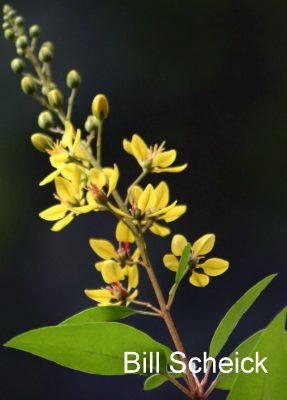Bill Scheick’s Plant List

THE JOYS AND PERILS OF ZONE-PUSHING
Bill Scheick, retired University of Texas professor of American literature; gardener, writer, contributing editor for Texas Gardener magazine. Bill also writes an online gardening book review column for Texas Gardener.
- South African airplane or spider plant (Chlorophytum)
- Golden thryallis (Galphemia gracilis)
- Cordyline austalis ‘Crimson Star’
- Cordyline australis ‘Red Sensation’
- ‘Big Bertha’ Echinopsis x Trichocereus hybrid
- Pink jasmine (Jasminum polyanthum)
- Plumeria
- Bat-faced cuphea (Cuphea llavea)
- Cuphea micropetala ‘Candy Corn’
- Mexican heather
- Cuphea hyssopifolia ‘Allyson’
- Cigar or firecracker plant (cuphea ignea x C. angustifolia ‘Starfire’)
At over 20 years old, the USDA plant hardiness zone map is considerably outdated, while the more recent Arbor Day Foundation version (www.arborday.org/media/map_change.cfm) reveals that Texas, as elsewhere in the U.S., is hotter now than in recent decades.
Of course, long-term Lone Star gardeners already know this.
In USDA zone 8 (10-20″), for example, there are Austinites who for a number of years have been successfully growing zone 9 and even zone 10 plants in the ground. That’s zone-pushing.
Obviously Texas has gotten warmer. My flowering quinces, which used to bloom in February, now start blooming around New Year’s Day. Actually, I have photos of quince blooms with snow.
Maybe I should feel sheepish about hawking zone-pushing after our past winter with a few days in the teens. That can happen in Florida, too. The fact is, nonetheless, Central Texas has grown hotter.
9 months a year I use potted tropicals, usually considered houseplants including schefflera, along lightly shaded wood fences or under trees, where most in-ground plants frequently struggle anyway. Their visual impact is wonderful.
The warming trend not limited to our state. Cherry blossoms in Washington, D.C. appear earlier than decades ago, and Chicagoans see snowdrops unexpectedly flowering in January. Those oleanders and brugmansias we tend to take for granted in most of Texas now survive in Atlanta — officially zone 7, incidentally.
Zone-pushing is gambling with nature, with nature having house-odds advantage, but many gardeners love the challenge of beating the odds and getting unique effects in their yards.
- One way to hedge your zone-pushing bet against nature is to exploit micro-climates. Trailing lantana (Lantana montevidensis), for example, is a South American plant that usually dies back during winter in Central Texas, but can remain evergreen and blooming all winter when benefitting from a micro-climate, such as a home foundation.
- To push cold-hardiness zones, plant for southern rather than northern exposures. Also during frosts, observe warmer places in a yard free from frost.
- Mulch zone-pushed plants a lot.
- If teens threaten, toss a bucket of water over roots the day before!
Recently zone-pushed plants locally:
- Jasminum polyanthum — called pink jasmine, zone 9, from western China
- Galphemia gracilis — golden thryallis zone 9-11 [my favorite summer-blooming perennial from Central America]
- Cordyline australis, [pronounced cor-dee-line] a zone 9 plant, offers special structural effects.
- Cuphea hyssopifolia, ignea, llavea and micropetala– that is, Mexican heather, firecracker plant, bat-faced cuphea [pronounced coo-FAY-ah] and candy corn plant — all zone 9 plants — offer flowering shrubs in varying sizes.
categories:
tags:
related:
